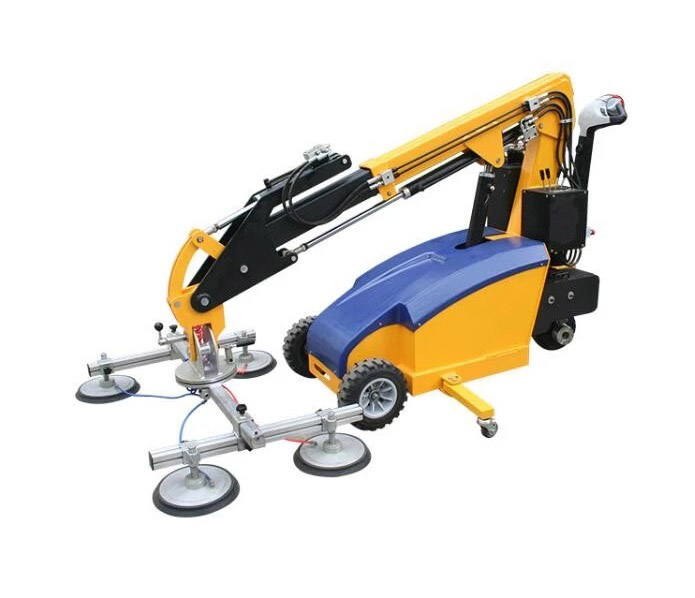
Analysis of the Mystery of Absorbing and Releasing Objects by Vacuum glass lifters
Keyword:Vacuum glass lifters Time:2019-11-5 8:53:44
Vacuum glass lifters can firmly hold large objects and transport them to designated locations and release them. However, in this series of processes, the objects are intact. How can vacuum glass lifters achieve this?
In theory, the adsorption force of vacuum glass lifter is only related to the vacuum degree and glass lifter area of the pump, but not to the flow rate of the pump. But in practice, it is related to the flow parameters of the micro-pump. The reasons are as follows:
Because it is impossible to seal absolutely between the vacuum glass lifter and the absorbed object, there will always be a leakage. In this case, the larger the flow rate of the miniature vacuum pump, the smaller the proportion of leakage, the more conducive to maintaining a higher vacuum, thus obtaining a greater adsorption force. For example, there are two pumps with the same vacuum degree. The flow rate of pump A is 1 L/min and that of pump B is 20 L/min. Under the same leakage condition of 0.5 L/min, the vacuum degree of pump A will be much lower, because the leakage of 0.5 L/min occupies 50% of the flow rate of pump A, which is too large.
But the leakage of 0.5 L/min only accounts for 2.5% of the flow rate of B pump. It is nothing, vacuum glass lifters can still maintain a high vacuum. Therefore, although they have the same vacuum degree, in practice, the adsorption force produced by pump B is greater. Therefore, both the vacuum degree and the flow rate must be considered in the selection of pumps. It is not enough to only pay attention to the vacuum degree index.
About the release of the glass lifters after it absorbs the object. When the pump stops, the object does not necessarily fall off immediately, because the pump has a certain pressure-holding capacity, and the vacuum will continue for a while. In order to release immediately, a pressure relief branch should be added between the pump and vacuum glass lifters, which connects a valve, opens the valve to relieve gas, and eliminates the vacuum in the air system, so as to release the object reliably.
Vacuum glass lifters are made of different materials, so vacuum glass lifters made of different materials are used in different places, and their bearing gravity is also different.
The materials used to produce vacuum glass lifters are generally rubber, plastics and metals. The vacuum glass lifters we often see are made of NR, NBR, SI, FKM, PUR, NE, EPDM, SE and other rubber. If we classify them by shape, they can be divided into flat glass lifters, elliptical glass lifters, corrugated glass lifters and abnormal glass lifters. The corrugated glass lifters can be further subdivided into two-layer corrugated glass lifters, three-layer corrugated glass lifters and multi-layer corrugated glass lifters. According to the way of thin airtight space, it can be divided into pneumatic glass lifter and manual glass lifter. It is the cheapest way to grab products by vacuum glass lifters. Vacuum glass lifters vary in variety. Rubber glass lifters can be operated at high temperatures. Silicone rubber glass lifters are very suitable for grasping rough surface products. Polyurethane glass lifters are very durable. In addition, in actual production, if the glass lifters is required to be oil-resistant, it can be considered to use polyurethane, nitrile-butadiene rubber or polymer containing vinyl group to make glass lifters. Usually, in order to avoid scratches on the surface of the product, it is better to choose a glass lifter with bellows made of NBR or silicone rubber.


- No information
-
1. Design objective of electronic crane scale network management. (1) Adopt advanced distributed data processing techno…
-
Electronic crane scale bearing platform installation to focus Electronic crane scale can be installed generally on the li…


